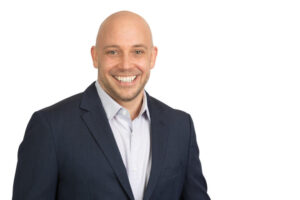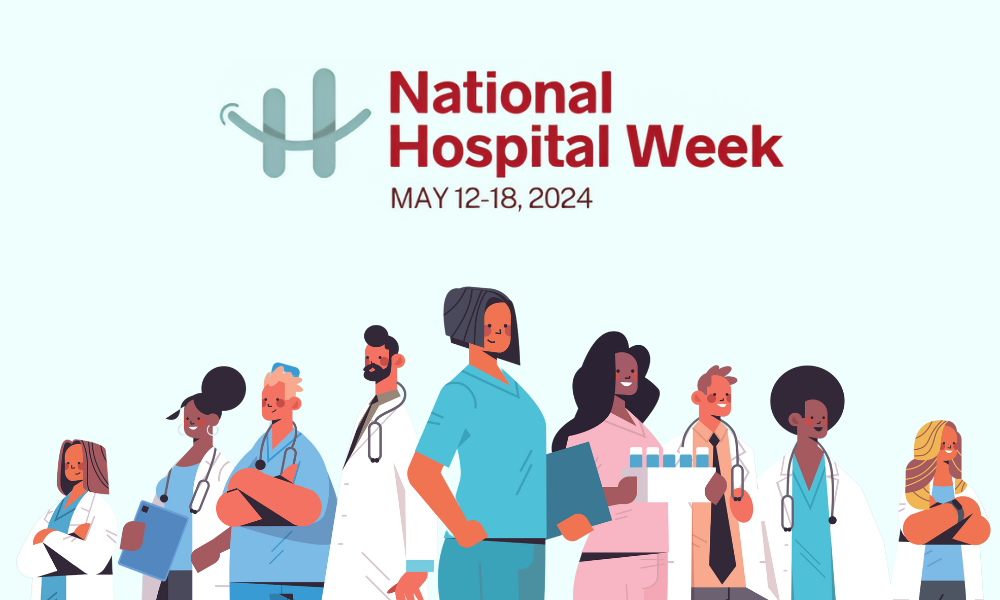WSJ Highlights Locum Tenens Docs Turning Gig Work Into Full-Time Career
(From The Wall Street Journal, 6/6/2023)
The locum tenens industry received national recognition earlier this month when The Wall Street Journal covered the growing number of providers turning to locums instead of the “more traditional” medical career path. WSJ’s coverage reinforces locum tenens as a potential solution to burnout and staffing shortages for healthcare systems.
Doctors used to look at temporary, part-time gigs as a transition into the retirement phase of life, but that’s all changed. Instead, more physicians are turning to full-time careers as locum tenens physicians.
The shift was something anyone in the healthcare industry would have seen coming — doctors have always endured overloaded work schedules, burnout, and no work-life balance. The COVID-19 pandemic put an even bigger strain on the healthcare system, leading many doctors to rethink their career choices. A survey conducted this year revealed that a majority of physicians described themselves as burned out, which led many of them to transition out of traditional medical careers.
Locum tenens assignments offered an opportunity to help them regain balance and focus on providing the best possible patient care. Taking a locum tenens gig lets doctors get back to practicing medicine “for the love of the game” instead of being forced to endure the grueling schedule with no relief in sight.
Around 50,000 doctors, or about 7% of the US physician workforce, now practice medicine through temporary assignments, marking a nearly 90% increase since 2015. The demand for temporary physicians is especially high in rural community hospitals — primary care doctors and specialists like cardiologists, pulmonologists, surgeons, and oncologists are the most sought-after in these facilities.
Temporary hospital gigs can pay significantly more than full-time positions, with some doctors earning 30% to 50% more, depending on the specialty and location each physician chooses. But a potential drawback to being a temporary physician is the responsibility of financing retirement and other benefits.
While the gig-working approach presents challenges, it enables community hospitals, especially in rural areas, to provide essential services and continuous care. Critics might express concerns about the potential disruption of patient care and continuity, particularly in oncology or obstetrics. However, doctors who have switched to temporary work argue that patients benefit from physicians who can focus solely on providing care instead of the burden of administrative tasks or meetings.
La Vida Locum
SIA Revises 2022 Locum Tenens Market Size Upward to $6.1 Billion, Now Expects 10% Growth This Year (and 8% in 2024!)
(From SIA’s “Healthcare Staffing Report” newsletter, 6/8/2023)
In its latest market report, Staffing Industry Analysts (SIA) estimates that the locum tenens industry sizzled even more than previously believed in 2022. Last year, demand for temporary physicians and advanced practitioners surged, causing the market to swell to $6.1 billion, a jaw-dropping increase of 25% in the span of 12 months.
The upward trajectory for locum tenens shows no signs of slowing down. The SIA report anticipates sustained momentum, with an estimated 10% market growth this year and an 8% expansion projected for 2024.
If the 10% projection proves correct, the market will be knocking on the door of $7 billion by early next year. These growth rates underscore the increasing relevance and demand for temporary healthcare professionals within the broader medical industry.
SIA has published a separate Locum Tenens Market Assessment Report to provide a more granular understanding of this market shift. Available to members on their website, this detailed analysis further explores the current trends and forecasts within the locum tenens sector. It’s a valuable resource for anyone keen on staying up-to-date with the latest developments in this dynamic market.
If your firm isn’t an SIA member yet, check it out.
The Post-Pandemic Locum Tenens Landscape: Key Takeaways From The State of Locum Tenens Report
(From locumstory & Weatherby Healthcare, 6/2/2023)
The demand for locum tenens providers has reached historic highs in the healthcare industry. Locum tenens providers have been around for more than 40 years, stepping in to fill coverage gaps in communities where a full-time provider isn’t available. However, the COVID-19 pandemic further emphasized their crucial role, propelling the need for more locum tenens providers into the limelight.
CHG Healthcare released its annual State of Locum Tenens Report earlier this year, and here are a few of the biggest takeaways from the report and the impact locum tenens providers are having on our healthcare landscape.
1. More physicians have chosen to work locum tenens.
Since 2015, there has been an 88% increase in physicians who work at least one locum tenens assignment throughout the year. Many providers are turning to locums for a better work-life balance committing to temporary work, while others are taking locum tenens shifts in addition to their permanent job. Overall, 7% of active physicians are working locum tenens.
2. Both physicians AND healthcare leaders share positive impressions of locum tenens.
CHG found that 71% of physicians reported a “very” or “somewhat” positive impression of locums, and 82% reported a positive experience after working on a locum tenens assignment. This change was related to the possibility of greater income, the ability to work while looking for a full-time role, and more control of their work schedules.
3. Facilities and leaders like locums because of the “continuity of care.”
Healthcare facilities have myriad reasons for using locum tenens providers. Still, the top reason they cited in CHG’s report was that they wanted to provide coverage in the interim while looking for a permanent candidate. They also liked using locum tenens to reduce burnout by giving permanent workers a break.
4. Primary care, psychiatry, and oncology are in greater demand.
Primary care remains the most utilized specialty for locum tenens, but that’s followed closely by certain sub-specialties. Oncology has claimed a top spot on CHG’s list of the most-utilized medical specialties for the first time.
The growth in positive sentiment toward locum tenens providers presents an opportunity for staffing agencies to point to actual data showing providers the promising future of locum tenens. The healthcare industry faces a significant shortage of clinicians, so locum tenens providers will be crucial to maintaining optimal patient care. CHG’s State of Locum Tenens report reinforces that locum tenens providers are here to stay.
How Locum Tenens Improves Health and Well-Being
(From Advisory Board 6/12/2023)
Physicians say that stepping away from their full-time positions in favor of temporary assignments has helped them improve their mental and physical health. A 2023 Medscape survey of 9,100 physicians said 53% of physicians were burned out, up from 47% in last year’s report.
That data is unsurprising. Physician burnout has been a long-standing issue in healthcare, exacerbated by the COVID-19 pandemic. Physicians have other options to work locum tenens now, which comes with a hefty price bump, too. More employers need to be aware of the positive impact providers have on the healthcare industry and do what’s necessary to attract more locums providers to their facilities.
Advisory Board listed three things an organization can do to win physician talent – something healthcare facilities should take to heart.
- More meaningful autonomy: Employers of choice, an employer that delivers a superior employee experience and whom workers choose to work for when presented with other employment choices, should offer a mix of clinical (“I can practice the way I want”), schedule (“I can control when and how I work”), and strategic autonomy (“I can help make the important decisions”).
- More time to do their job: Physicians require sufficient time for their diverse responsibilities, both within and outside patient visits, and employers of choice recognize and respect their need for personal and professional reflection, treating them as valued individuals with basic needs and expectations.
- Seamless provider support: Give physicians wellness and emotional support and the care team and technical support needed to perform the job successfully.
Employers who make physicians’ lives easier make it a “sustainable” work environment, which will be the way to win talent in 2023 and beyond.
The Rising Influence of APPs in the Healthcare Industry
(From LocumTenens.com, 6/5/2023)
Advanced Practice Practitioners (APPs) are increasingly recognized for their role in the US healthcare industry. APPs have fed into the desire for facilities and practices to lower costs by expanding APP coverage.
To succeed in hiring APPs for locum tenens positions in a competitive labor market, recruiters need to understand how these providers think.
A LocumTenens.com study revealed that around 74% of medical practices planned to increase APP coverage. As more and more facilities see the benefits of utilizing APPs – lower cost, flexibility, and improved access to care, to name a few – facilities can be expected to rely on APPs more in a locum tenens capacity.
APPs have distinct career goals compared to physicians. They show minimal interest in non-clinical or administrative roles, with only 7% expressing a desire for executive leadership positions. APPs are more inclined to seek new practice opportunities, including locum tenens positions in their local community. To effectively attract and retain APPs, organizations must acknowledge their unique needs and implement tailored strategies that support their professional growth.
If organizations start to see the value of APPs, understand their goals, and cater to their needs, organizations can build a successful relationships with providers. Better relationships between the two help recruitment efforts for healthcare facilities and improve the overall staff retention at those facilities.
Locum Leaders
Jackson Healthcare Completes Acquisition of LRS Healthcare, Expanding Nursing, and Allied Staffing Footprint
(From BusinessWire, 6/12/2023)
On June 12, Jackson Healthcare finished the acquisition of LRS Healthcare. The companies shared news of their definitive agreement to combine last month.
Since its inception in 2006, LRS has connected nurses and allied healthcare professionals to facilities nationwide. By coming under the umbrella of Jackson Healthcare, LRS joins one of the nation’s largest healthcare staffing organizations whose family of companies helps provide temporary and permanent staff to thousands of facilities nationwide.
LRS will still operate under the same brand from its headquarters out of Nebraska, where it ranked No. 1 on the “Best Places to Work” in Omaha’s large business category.
Jackson Healthcare President Shane Jackson says the company was delighted to welcome in LRS, and he looks forward to entering this next chapter of growth at Jackson Healthcare with the addition of LRS and its nursing and allied staffing expertise.
Jeff Beckman, president of LRS, says he was also excited about the new acquisition and the opportunity that comes along with joining the Jackson Healthcare family.
Medicus Healthcare Solutions Named a ‘Best of Staffing’ Firm for Women
(From Medicus Healthcare Solutions, 6/12/2023)
Medicus Health Solutions announced on June 7 it had qualified for ClearlyRated’s inaugural “2023 Best Staffing Firms for Women” list for providing an exceptional experience for women in their company.
The award highlights companies that “demonstrate a strong commitment” to gender equality and advancement for female-identifying employees. To qualify for the recognition, Medicus Healthcare Solutions had to receive feedback from 100% of its internal staff and have women comprise at least 47% of its workforce.
Fewer than 1% of staffing firms in North America qualified to earn this designation. Chief People Officer Heather Croke says Medicus was grateful to be named to the list and it has been amazing watching Medicus employees collaborate in her time there. She said the company has always stressed the importance of creating a supportive and inclusive workplace culture for its employees, so it was nice to get the recognition.
CEO Bob Dickey agreed with Croke, saying this achievement of being named to the list had been a “testament to [Medicus’] commitment to creating a workplace that empowers and supports women.”
All Star Healthcare Solutions Names Ken Bernstein as Next CEO
(From All Star Healthcare Solutions, 6/13/2023)
All Star Healthcare Solutions has appointed Ken Bernstein as chief executive officer while retaining his role as president of the healthcare staffing firm. Bernstein joined the company as chief financial officer in 2012 and was promoted to president in August 2022. He takes over from Keith Shattuck, who had served as CEO since 2005.
Shattuck will continue to be involved with the company as chairman of All Star’s Partners Board. All Star says the move is a “strategic development” for the company, as Bernstein’s extensive knowledge of the business and leadership qualities position him well to best lead the company in this next phase.
In addition to Bernstein’s appointment, Pat Kennedy, who joined All Star in 2016, will step down from her position as chief strategy officer and fully transition to the Partners’ Board, which she helped establish.
Bernstein expressed gratitude for the support of the Partners’ Board and the All Star family, saying it was “humbling and an honor” to have earned the confidence and support of the Partners’ Board.
Hire Power
Addressing Workforce Shifts: 36 Healthcare Leaders Share Recruitment and Retention Strategies
(From Becker’s Hospital Review, 6/12/2023)
According to an economic report from Linkedin, staffing issues impact every industry, and the labor markets are tighter in 37 US states than before the COVID-19 pandemic. How is the healthcare industry addressing these staffing challenges?
Becker’s Hospital Review asked 36 industry leaders to share their strategy to attract and retain talent during workforce shifts and tight budgets. Here are some of the responses from healthcare leaders who addressed how their organization is looking to attract and retain talent:
Tiffany Sullivan, senior vice president and COO of physician services at NewYork-Presbyterian, said, “NewYork-Presbyterian is focused on providing [its] team members with flexibility, competitive pay, and a dynamic, engaging environment.” Sullivan said the facility viewed rewards not as a budget constraint but “as an investment in [its] people” which will allow them to remain a top healthcare provider in New York.
Eric Smith, chief digital officer at Memorial Hermann (Houston), told Becker’s that the hospital has “successfully recruited talent from within and outside of healthcare who are enthusiastic about helping drive [Memorial Hermann’s] digital transformation efforts.” To attract and retain the best talent, Smith says his facility has “established new roles and implemented various innovative initiatives across our system” to engage individuals who want to make a difference.
Joseph Zehler, director of specialty physician revenue cycle at St. Joseph’s/Candler Health System, says his facility is taking a “multi-pronged” approach to recruitment and retention. There are several areas his facility has focused on “in order to keep staff within our organization,” he says. This list includes “competitive pay, flexible work hours, hybrid work-from-home, incentive pay, career paths,” and, most importantly, providing a great work environment for staff.
Becker’s will make this a continuous series leading up to the event in October by talking to different healthcare leaders like the three mentioned above and the other 30+ in the full article. Each of the executives interviewed will speak at Becker’s Health IT, Digital Health + RCM Annual Meeting on Oct. 3-6 in Chicago. Learn how to get tickets to the event here.
NALTO/Butler Street Webinar: The Most Effortless Way to Acquire New Business
(From NALTO/Butler Street, 6/15/2023)
Robert Reid, principal of Butler Street, shared insights on acquiring and leveraging client referrals to establish trust in the marketplace at the recent NALTO/Butler Street Webinar titled, “Asking For Referrals – The Most Cost-Effective Way to Acquire New Business.”
Reid, who has 13 years of experience in business development and recruitment, spoke about the outcomes of successful referrals and discussed the best practices for obtaining them.
During the webinar, attendees discussed the effectiveness of offering referral bonuses and understanding the needs of potential referrers to facilitate the referral process. Reid emphasized that there are two types of referrals: sales and candidate referrals.
Reid said in sales referrals, 83% of customers are open to referring a business after a successful purchase. Sales referrals increase sales, reduce churn rates, promote brand awareness, and foster relationships to enhance customer lifetime value.
With candidate referrals, Reid says employers rate referrals from employees as the best return on investment, and referred candidates are more likely to secure job positions. The benefits of candidate referrals include higher candidate quality, an expanded hiring network, and simplified recruitment processes.
Reid stressed the importance of an “active approach” when seeking referrals. An active approach provides clear expectations and deadlines for obtaining names, he says. Being proactive and assertive in acquiring leads is crucial. Reid also says you must make the process of giving and receiving referrals easy. Strategies such as incorporating referrals into onboarding and crafting targeted referral emails can facilitate connections and introductions.
Interested in attending webinars similar to this one? Check out NALTO’s LinkedIn page for upcoming webinar announcements.
Making the Rounds
From Organizational Culture to Practice Efficacy: Strategies for Addressing Physician Burnout
(From American Medical Association, 6/1/2023)
Healthcare leaders need to be prepared to use every tool at their disposal to tackle the issue of physician burnout, according to Dr. Amanjot Singh Sethi, a urologist and wellness operations director at The Permanente Medical Group. In a recent webinar with Becker’s Hospital Review, Dr. Sethi emphasized the need for healthcare leaders to prioritize combating burnout.
Dr. Sethi suggested addressing factors from “organizational culture to practice efficacy.” The Permanente Medical Group has actively worked to prevent and mitigate burnout among its nearly 10,000 physicians. Dr. Sethi says their efforts include promoting more “autonomy, flexibility,” and offering more professional development opportunities for physicians.
The medical group has also offered other creative ways to promote well-being like providing forgivable loans, diversifying well-being initiatives, and creating an environment that supports physicians in daily practice.” Dr. Sethi’s group has seen some success by encouraging open communication and feedback from its physicians and staff, and he claims this has helped lead to positive changes in their operations.
The organization has also acknowledged the burden of managing electronic health records and doing other administrative work and is exploring creative solutions such as delegating non-physician tasks and utilizing Artificial Intelligence (AI) tools to streamline administrative duties.
The Permanente Medical Group has adopted a “bottom-up” approach to address well-being by encouraging its leaders to ask staff about their needs and priorities. According to Dr. Sethi, the medical group firmly believes that organizations can significantly enhance the quality of care and support their physicians by prioritizing physician well-being and implementing strategies to reduce burnout.
Listen Up: To Create A ‘Sustainable’ Healthcare Workforce, We Need Dramatically Different Listening Systems
(From Medical Economics, 5/30/2023)
Turnover rates and burnout rates are high among healthcare workers in the US, and an aging population is putting more pressure on care consumption. Leslie Snavely, chief sales officer for CHG Healthcare, recently wrote an op-ed for Medical Economics where she suggested we need dramatically different listening systems if we want to create a sustainable model for the healthcare workforce.
Healthcare leaders feel overwhelmed, constrained, and lack remedies to address the turnover and burnout rates, Snavely says. She adds that while locum tenens physicians can provide some relief, they make up only a small percentage of practicing physicians. In order to make real progress, the focus needs to shift to the other 90% of the healthcare workforce in permanent roles.
Creating a culture of excellence and engaging the permanent workforce is crucial to create lasting change. Compensation and perks are not enough; studies have shown that pride in work and loyalty to colleagues are vital factors in retaining healthcare professionals. Organizations need to measure workforce engagement, listen to feedback, and implement incremental changes to address the healthcare industry’s greatest issues.
A sustainable healthcare workforce requires active participation from its members, where each worker feels supported, heard, and empowered to make a difference, Snavely says. Temporary staffing can provide the necessary space for engagement and dialogue, but the ultimate goal should be to build strong cultures within healthcare organizations. Snavely says this means listening to and acknowledging the opinions of physicians and staff, even if they are not fully accepted.
Socially Speaking
From LinkedIn
From Twitter
Second Opinion
Sign-On Bonuses and Beyond: Creative Approaches to Staffing in Medical Groups
(From Revcycle Intelligence, 5/31/2023)
Staffing costs were up 10% year over year, according to a survey from AMGA Consulting. Despite some stabilization of overall finances, medical groups and health systems’ biggest issue is the ever-present labor shortage, contributing to the overall cost increase.
AMGA’s “2023 Clinic Staffing Survey” included responses from more than 6,100 clinics. The survey revealed that 41% of clinics are operating at between 80% and 89% of their optimal staffing levels.
Hospital and physician financial performance is rebounding from lows in 2020-21, and hospitals are now reporting positive operating margins for the first time in 15 months. Still, labor shortages and costs continue to impact financial performance. Medical groups are looking for incentives to recruit and retain staff to boost staffing levels.
Here are a few popular tactics they are using to help attract prospects:
- 88% of medical groups offer referral bonuses, up from 83% in 2022.
- 78% are offering sign-on bonuses, up from 69% last year.
- 56% are making benefit changes, up from 41% in 2022.
In addition to incentives, medical groups are implementing process changes and leveraging technology to support clinic staffing. Organizations have started automating front-end tasks, using online patient portals, and implementing self-check-in or kiosks for office visits. Medical groups are also changing the care or staffing model to optimize roles and manage sub-optimal staffing levels.
Seeking Respite from The Regulatory Burden: Physicians Opt for Alternative Practice Settings
(From American Hospital Association, 6/7/2023)
Policymakers have expressed concern over the growing trend of physician practices being affiliated with hospitals or healthcare systems. But physicians say financial challenges, difficult insurer policies, and regulatory requirements are a few of the reasons why they often look to alternative practice settings.
Physicians are turning to hospitals, health systems, and other organizations to help ease the financial and administrative burden of managing their practice. This shift helps free up physicians to focus on clinical care. The administrative and regulatory burden and inadequate reimbursement rates create a barrier to operating an independent practice that acquiring systems can help solve.
Physician practice patterns are changing as physicians seek employment relationships with hospitals, health insurers, and private equity firms. Commercial insurers are subject to far fewer regulatory requirements compared to hospitals. For instance, physician practices acquired by commercial insurers have no Emergency Medical Treatment and Labor Act (EMTALA) obligations.
Despite the focus on hospitals as the cause of practice pattern changes, commercial insurer policies, especially prior authorization requirements, contribute to unworkable environments and increased physician burnout. Physicians are actively looking for alternative practice settings that alleviate these burdens, provide adequate reimbursement, and allow them to prioritize patient care. While hospitals and health systems are a natural fit for many physicians, commercial insurers are increasingly leveraging their considerable capital to lure physician practices.









